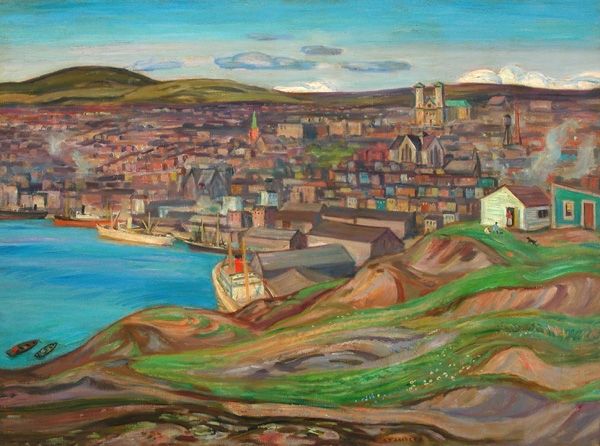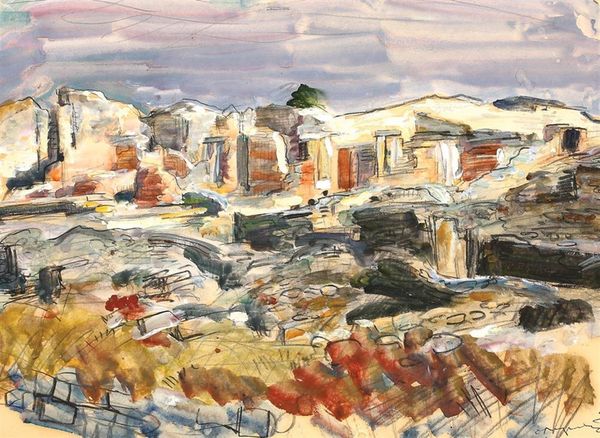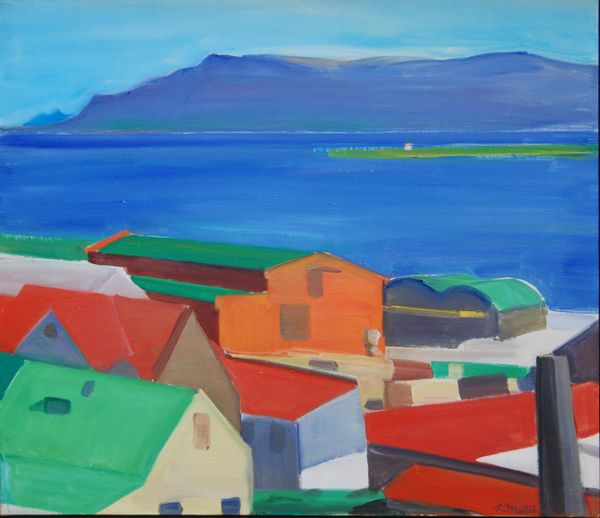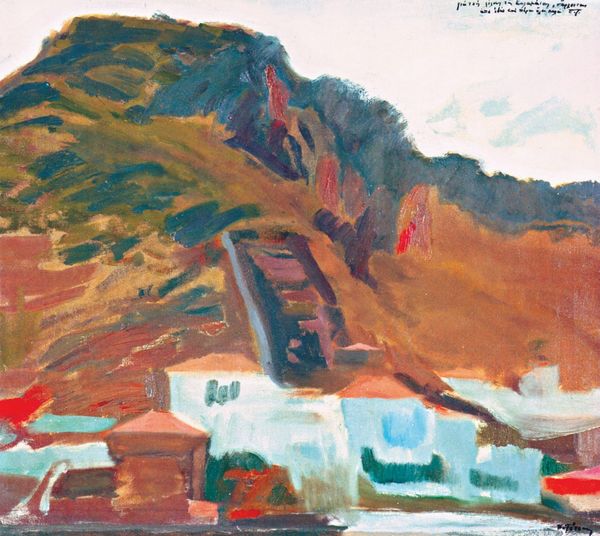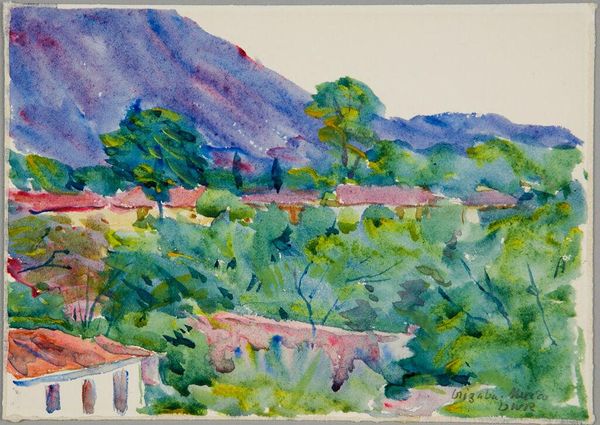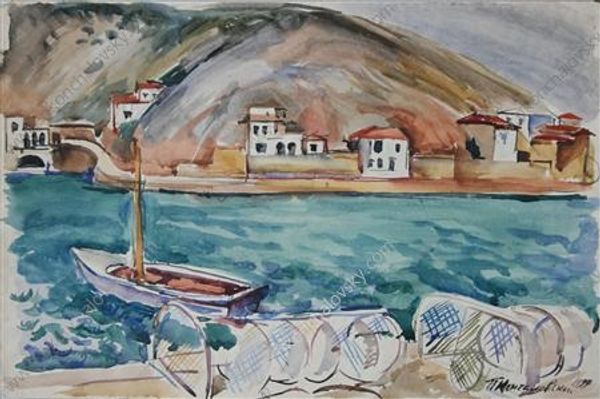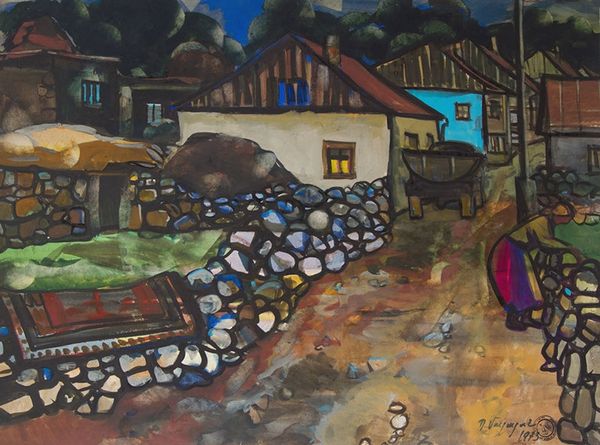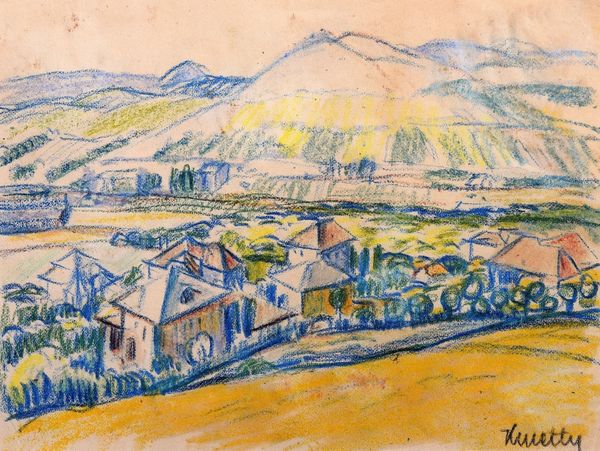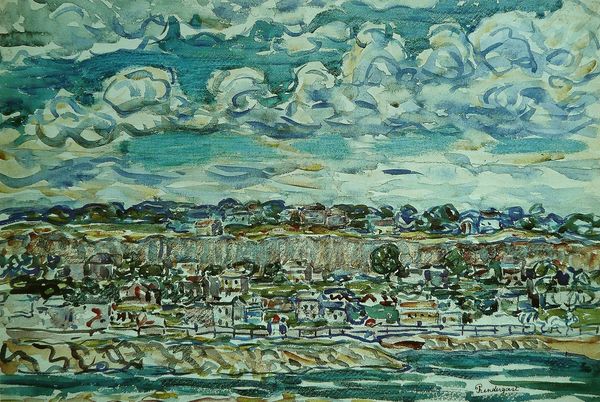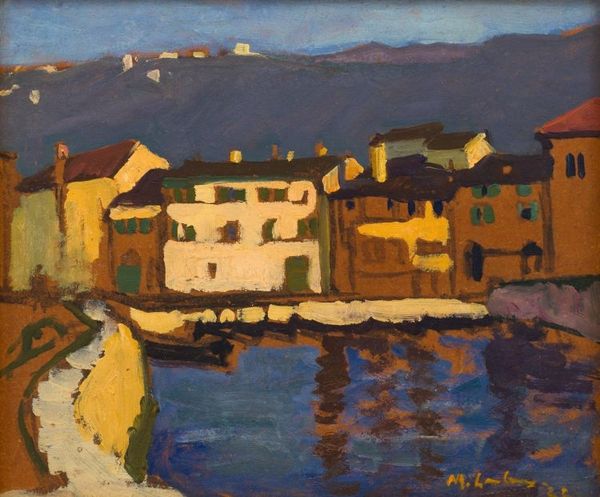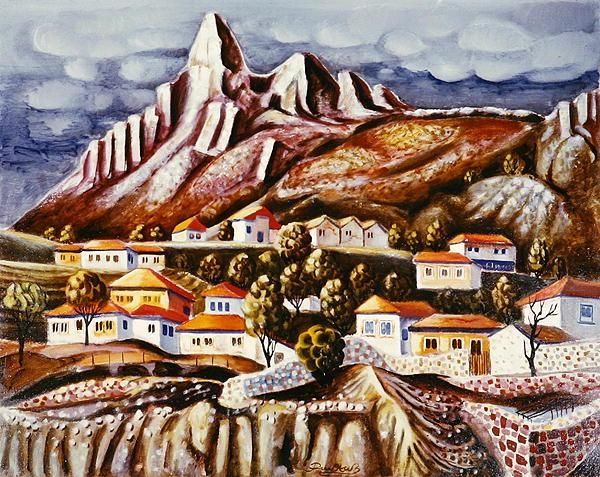
Copyright: Ivan Albright,Fair Use
Editor: This is Ivan Albright’s “Fez, Morocco,” an oil painting from 1960. The buildings cascading down the hillside are just vibrating with colour. What can you tell me about Albright's perspective here? Curator: Well, first, let's consider what it means to depict a place like Fez in 1960. Morocco had only recently gained independence. Albright’s perspective isn't just visual, it’s deeply embedded in the socio-political context of post-colonial representation. How does the flattened perspective and almost naive rendering of the city relate to the Western gaze on North Africa at that time, do you think? Editor: I see what you mean. It’s pretty, but also…detached. Almost like a postcard. Is that a conscious choice by Albright, perhaps? Curator: Possibly. Or perhaps a reflection of the broader orientalist trends in Western art. Consider also the fauvist brushwork. While vibrant, the thick application of paint seems to flatten any possibility of depth, hindering a true, embodied understanding of Fez. Can we celebrate the bright colors without interrogating that act of visual flattening? Editor: That’s a lot to unpack. So you are suggesting we need to consider the power dynamics implicit in even a seemingly innocent landscape painting? Curator: Precisely. We can look at Albright’s use of color, definitely, but must also confront the problematic historical relationships embedded within such a depiction. Otherwise we risk reinforcing, however subtly, existing power structures. Editor: Wow, I hadn’t thought about it that way. I’m seeing the painting in a completely different light now, and not just the bright fauvist light! Curator: Good. That's the start of meaningful engagement. This reminds us that how we look—who is doing the looking— is just as crucial as what we see.
Comments
No comments
Be the first to comment and join the conversation on the ultimate creative platform.
